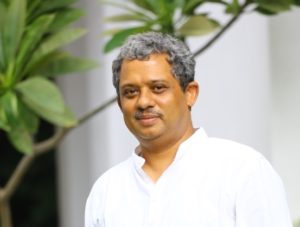Présentation
Kaustuv Sanyal – JNCASR (J. N. Centre for Advanced Scientific Research) / Bangalore India
Since the discovery of the 125-bp long “point” centromeres in Saccharomyces cerevisiae in 1980, centromeres have been identified in many eukaryotic organisms. Apart from a few budding yeasts like S. cerevisiae, centromeres in most other fungal species span a longer region that ranges from 3 kb to more than 300 kb. Unlike point centromeres, these “regional” centromeres may or may not have conserved sequence elements and thus either genetically or epigenetically specified. In spite of the rapid progress in this field due to advent of improved sequencing technologies, the finding the common determinants of the centromere structure and function remains elusive. We are interested in the evolution of centromere structure and function across the fungal kingdom. We cloned and characterized centromeres of closely related species of Candida and Cryptococcus that belong to the fungal phyla of Ascomycota and Basidiomycota respectively. We observed rapid divergence of the centromere DNA sequence and the organization of DNA sequence elements in Candida species although the length of centromeric chromatin remains around 3 kb across the species examined. We also demonstrated that centromeres in Candida albicans are epigenetically regulated. On the other hand, centromeres are long, retrotransposon-rich and repetitive in Cryptococcus species. Strikingly, we observed that RNAi plays a role in shaping the centromere structure in Cryptococcus species.
Website :sanyal@jncasr.ac.in
Contact : Christophe d’Enfert (Christophe.denfert@pasteur.fr)
